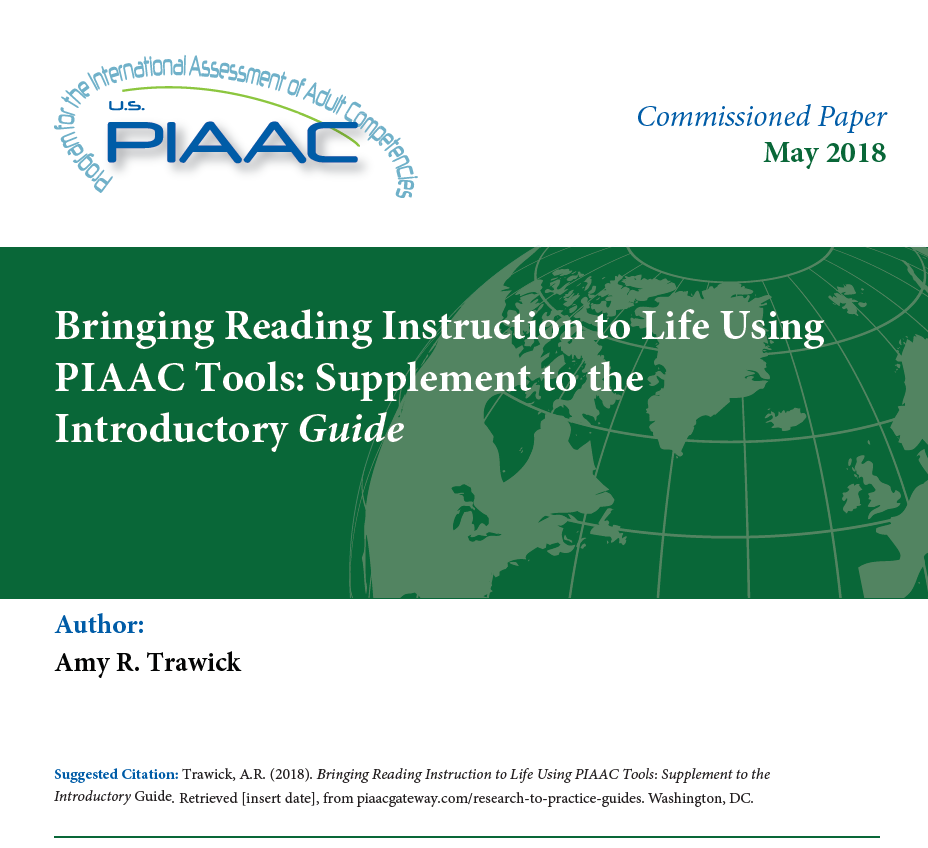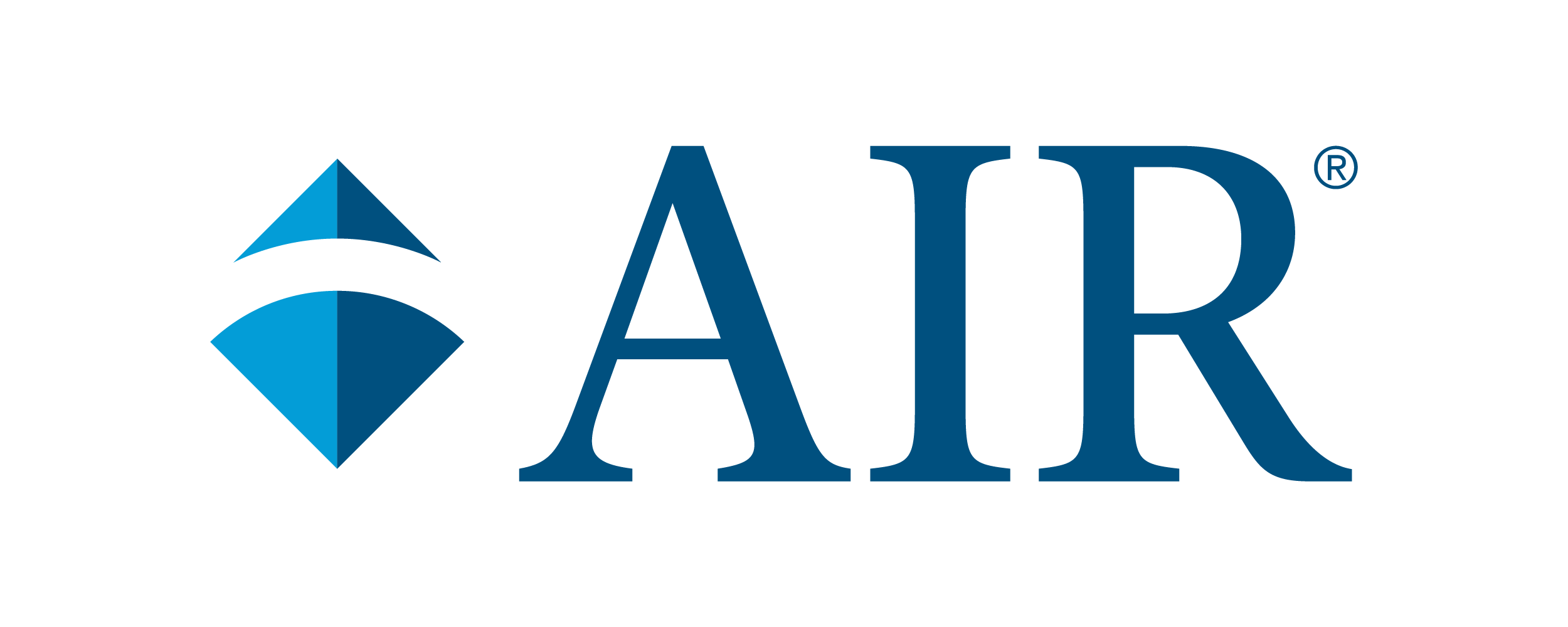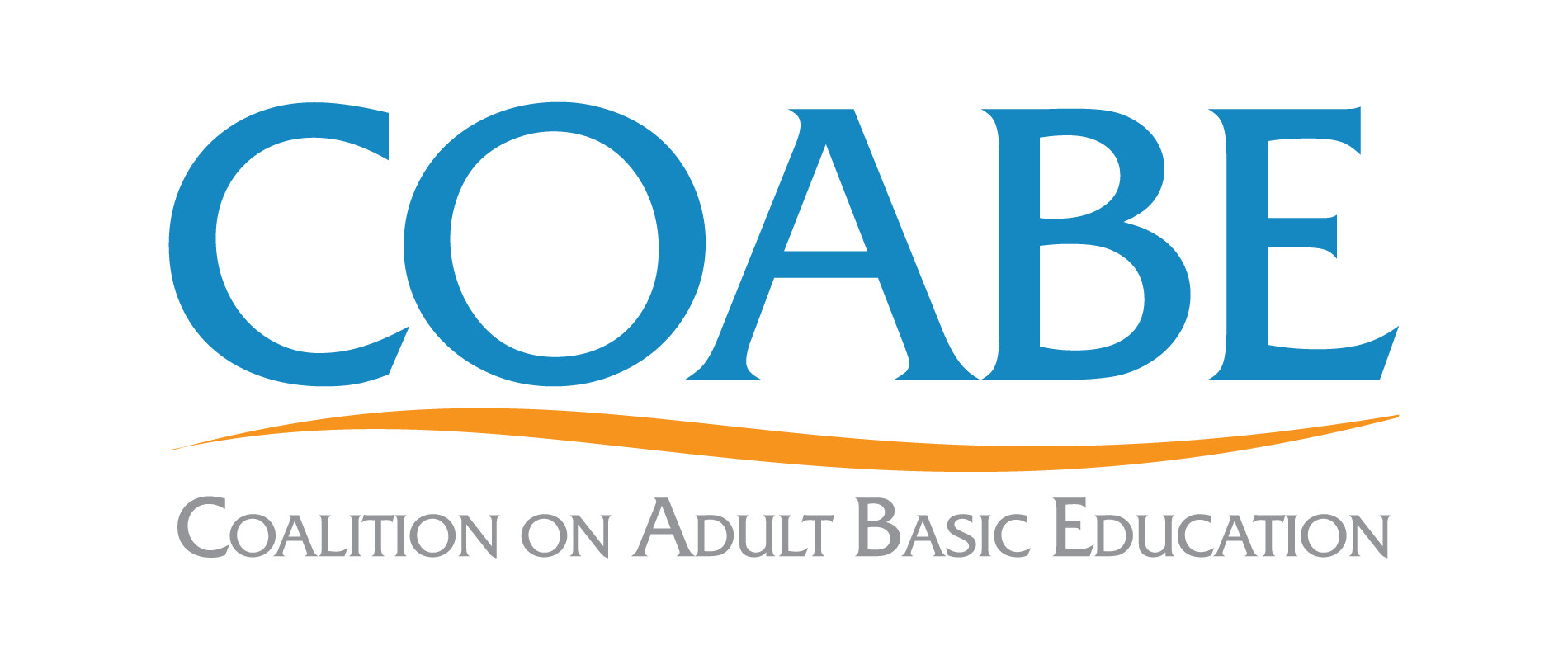Research-to-Practice Guides
Teaching reading is not easy. In the 21st century, reading requires us to navigate diverse text formats, written for varied purposes and presented in myriad media. We read for idiosyncratic reasons and in highly individualized situations, at home, in the community, and at work. The PIAAC conceptual framework for the literacy assessment addresses the multifaceted nature of reading. This guide introduces adult educators to aspects of PIAAC’s work that might inform reading instruction for adults. Drawing from the framework’s grounding in a use-oriented conception of competency and a view of proficiency as a continuum, this guide introduces a contextualized approach to curriculum development that supports adult learners in building skills for literacy use in ways that prepare them to exercise agency in the complex personal, social, political, and economic spheres of adult life in the United States. Classroom examples are included.
By Amy Trawick
This report is designed to complement the above report, Using the PIAAC Literacy Framework to Guide Instruction: An Introduction for Adult Educators, which promoted a contextualized approach to teaching reading in adult literacy/education programs. The purpose of this supplement is threefold: to flesh out the ideas introduced in the original report, to provide resources that will help make those ideas more accessible to teachers, and to answer frequently asked questions related to the kind of curriculum design advocated in the Guide.
The numeracy results from PIAAC confirm what many of us in adult education already know: too many adults in the United States do not have the numeracy skills they need to keep up with the demands of 21st century life. The PIAAC numeracy framework includes cognitive elements (such as math skills and knowledge) and noncognitive elements (such as attitudes, beliefs, and dispositions) that help describe what is required of an adult to use math. The framework includes enabling factors as well as a set of task characteristics that allow adult educators to construct concrete learning activities that move adults along a continuum of expertise from the very concrete to the abstract, from simple counting of items in a picture to abstracting and making decisions from a complex graph. If instructors shift their teaching to focus more on the use of numeracy skills, they may find that their students not only score better on formal assessments but that they are more effective in using numeracy in their daily lives.
This guide is for adult education and literacy practitioners who are ready to teach digital problem solving (i.e. PS-TRE). One of its goals is to nudge practitioners to reconsider current technology integration in Adult Basic Education (ABE) classrooms, adding a cognitive dimension to their technology use instruction. In doing so, teachers can include instructional activities that help learners to not only use technologies, but also develop an understanding of the complex processes required to employ them in conducting everyday tasks. Whether teaching in ABE, Adult Secondary Education (ASE), or English Language Acquisition programs, practitioners can refer to the guide when creating curricular activities that teach how to solve problems or handle day-to-day activities in the digital environment. The guide is based on key components of the PIAAC PS-TRE conceptual framework. It includes a description of the steps in the cognitive process put forth in the PS-TRE conceptual framework, how complexity varies in given problem-solving tasks, and a teachable PS-TRE process. In addition, the guide provides examples of instructional activities representing the process and use of technology at varying levels of complexity.













